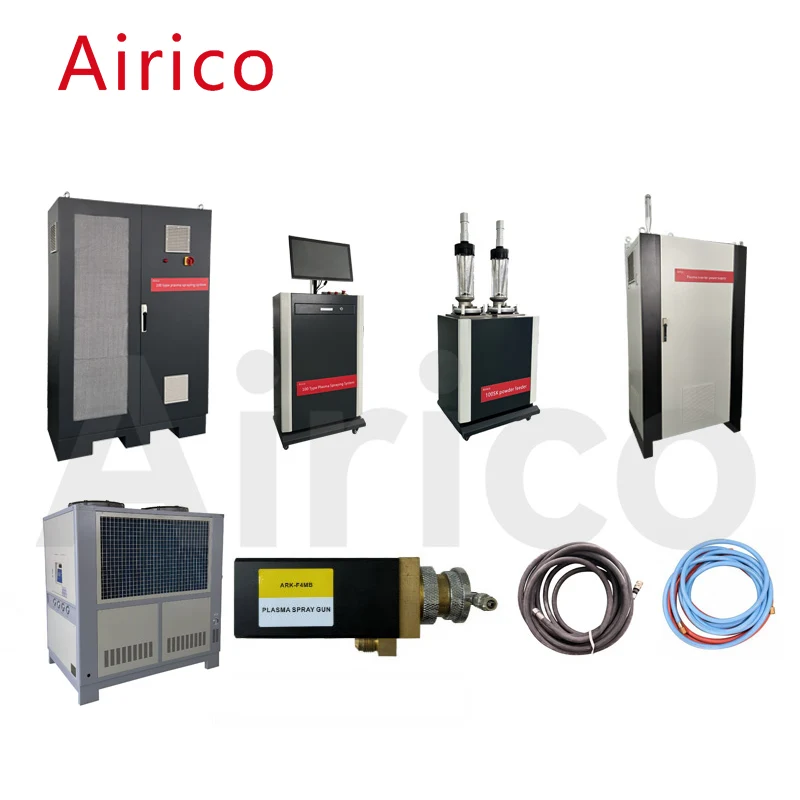Plasma spraying is a versatile and advanced thermal spray technique widely used in various industry sectors for applying ceramic, cermet, and metal coatings onto various substrates. This process leverages the energy of a plasma arc to melt and propel coating materials at high speeds onto the surface of the workpiece, creating a strong, durable, and functional coating. Here's an in-depth look at the applications and benefits of plasma spraying.

Aerospace and Aviation
In the aerospace and aviation industries, plasma spraying is crucial for the application of thermal barrier coatings (TBCs) on turbine blades and vanes. These coatings are designed to protect the underlying metal from high temperatures, thus enhancing engine efficiency and durability. Additionally, plasma spraying is used to apply wear-resistant coatings on landing gears and other critical components to improve their lifespan and performance.
Automotive
The automotive industry also benefits significantly from plasma spraying. Coatings applied through this process can enhance corrosion resistance, wear resistance, and thermal insulation in automotive components. For instance, plasma-sprayed coatings are used on exhaust systems to improve heat resistance and durability. They are also applied to brake components to enhance friction and wear properties.
Energy
In the energy sector, plasma spraying is used for the application of corrosion-resistant coatings on pipelines, valves, and other equipment exposed to aggressive environments. These coatings help protect the equipment from degradation and extend their service life. Additionally, plasma spraying is employed in the manufacturing of solar thermal collectors, where it is used to apply highly emissive coatings that enhance heat absorption efficiency.
Medical
The medical industry relies on plasma spraying for the production of implants and surgical instruments. Coatings applied through this process can improve the biocompatibility, wear resistance, and corrosion resistance of medical devices. For example, plasma-sprayed titanium coatings are commonly used on orthopedic implants to enhance their osseointegration and durability.
Industrial Machinery
In industrial machinery, plasma spraying is used to apply wear-resistant and corrosion-resistant coatings on parts subjected to high mechanical stress and aggressive environments. Coatings applied through this process can significantly extend the lifespan of industrial components, reducing downtime and maintenance costs.
Electronics
In the electronics industry, plasma spraying is used for the application of thermal management coatings on printed circuit boards (PCBs) and other electronic components. These coatings help dissipate heat more efficiently, preventing overheating and enhancing the reliability of electronic devices.
Versatility: Plasma spraying can be used to apply a wide range of coating materials, including ceramics, metals, and composites.
High Bond Strength: Coatings applied through plasma spraying exhibit high bond strength to the substrate, ensuring durability and reliability.
Thickness Control: This process allows for precise control over coating thickness, enabling the achievement of desired properties and performance.
Cost-Effective: Plasma spraying is a cost-effective alternative to other coating methods, such as plating and physical vapor deposition (PVD), especially for large-scale applications.
Environmentally Friendly: Modern plasma spraying equipment operates with high efficiency, minimizing waste and emissions.
Several variations of plasma spraying exist, each tailored to specific applications and coating materials. These include:
Atmospheric Plasma Spraying (APS): The most common type, used for applying a wide range of coating materials in various industries.
Low-Pressure Plasma Spraying (LPPS): Provides better control over coating microstructure and properties, suitable for critical applications requiring high performance.
Vacuum Plasma Spraying (VPS): Offers superior coating quality and control, ideal for applications requiring high purity and low porosity.
High-Velocity Oxy-Fuel (HVOF) Spraying: Although not strictly plasma spraying, it uses similar principles and is often compared due to its high-velocity coating deposition capabilities.

